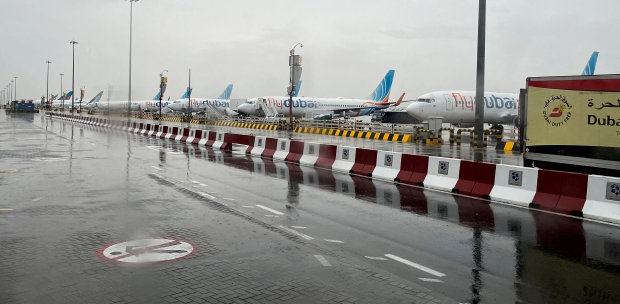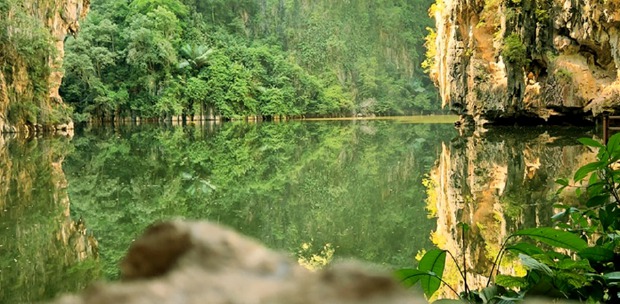Scientists and policymakers recognise that climate change and biodiversity loss are interconnected, but in practice they are largely addressed in their own domains.
Followers of the biodiversity loss crisis, therefore, welcomed last week's report on a joint workshop by the Intergovernmental Panel on Climate Change (IPCC) and the Intergovernmental Platform on Science-Policy Advice on Ecosystems and Biodiversity (IPBES).
Since 1992, when the two issues (along with desertification) became the subject of individual United Nations treaties, biodiversity has never received the same level of global attention accorded to climate. However, neither will be successfully resolved unless they are tackled together and urgently. That was the main takeaway from the report by 50 leading experts jointly chosen by the IPCC and IPBES.
Professor Hans-Otto Pörtner, a senior IPCC expert and co-chair of the report's Scientific Steering Committee, said: "Solving some of the strong and apparently unavoidable trade-offs between climate and biodiversity will entail a profound collective shift of individual and shared values concerning nature, such as moving away from the conception of economic progress based solely on gross domestic product growth to one that balances human development with multiple values of nature for a good quality of life, while not overshooting biophysical and social limits."
Among the most valuable double-edged swords available to fight climate change and biodiversity loss:
STOP the loss and degradation of carbon- and species-rich ecosystems, especially forests, wetlands, peatlands, grasslands and savannahs; coastal ecosystems such as mangroves, salt marshes, kelp forests and seagrass meadows; and deep water and polar "blue carbon" habitats.
RESTORE carbon- and species-rich ecosystems. Restoration offers much-needed plant and animal habitat, enhances the resilience of plants and animals in the face of climate change, and other benefits such as flood regulation, coastal protection, enhanced water quality, reduced soil erosion and supporting pollination.
INCREASE sustainable agricultural and forestry practices to help adapt to climate change, enhance biodiversity, increase carbon storage and reduce emissions.
These include measures diversifying planted crop and forest species. Better managed cropland and grazing systems, including soil conservation and less fertiliser use, could offset three to six gigatonnes of carbon dioxide equivalent (one gigatonne, or one billion tonnes, is roughly the mass of all land-based non-human animals).
ENHANCE and better target conservation actions. The Campaign for Nature advocates conserving in a natural state at least 30 per cent of all lands and waters by 2030.
ELIMINATE subsidies that support deforestation, over-fertilisation and over-fishing and other environmental harms. Better investments would help in changing individual consumption patterns, reducing loss and waste and shifting diets, especially in rich countries, towards more plant-based options.
On the don't do list:
BIOENERGY crops in monocultures over a large land area as they harm ecosystems on very large scales and impede progress towards many Sustainable Development Goals.
PLANTING trees in ecosystems that haven't historically been forests and reforesting with monocultures. This practice can absorb atmospheric CO2 but often damages biodiversity, lowers food production and may displace local people, among other problems.
INCREASING irrigation capacity. A common response to adapting agricultural systems to address drought often leads to water conflicts, dam building and long-term soil degradation from salinisation. The report also noted that renewable energy technologies may generate surges of mining activity or consume large tracts of land.
Such impacts can be minimised by developing alternative batteries and long-lived products, efficient mineral recycling systems, and approaches to mining that emphasise environmental and social sustainability.
The experts stress that while nature offers effective ways to mitigate climate change, these solutions can only be effective if they build on ambitious reductions in all human-caused greenhouse gas emissions.
Indeed, above all else, CO2 emissions simply have to come down, and quickly.
"Land and ocean are already doing a lot, absorbing almost 50 per cent of CO2 from human emissions, but nature cannot do everything," said IPBES chair Ana María Hernández Salgar.
IPCC chair Hoesung Lee said: "Climate change and biodiversity loss combine to threaten society, often magnifying and accelerating each other."
The report also represents a timely warning for Malaysians given our polemics about the future of Tasik Chini, a Unesco Biosphere Reserve threatened with ecological collapse due to human activities. Our leaders must be visionary and steadfast in efforts to enact CO2 reduction policies and promote nature-positive actions.
The writer is the founding chair of IPBES, senior fellow of the Academy of Sciences Malaysia and science adviser to the Campaign For Nature
The views expressed in this article are the author's own and do not necessarily reflect those of the New Straits Times






